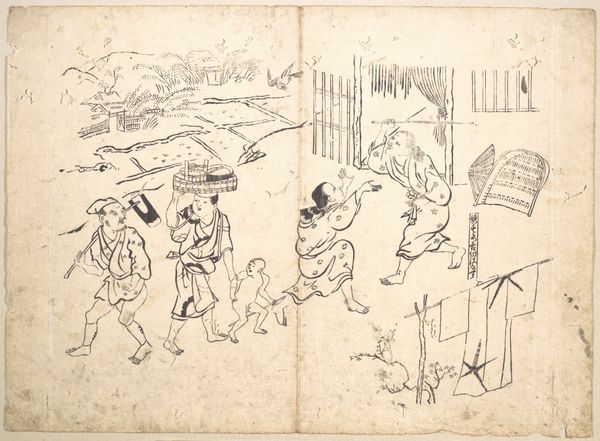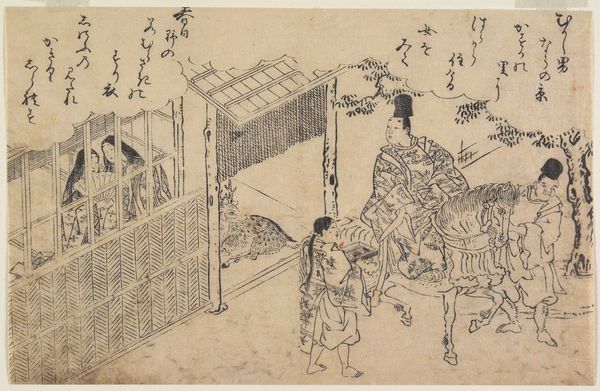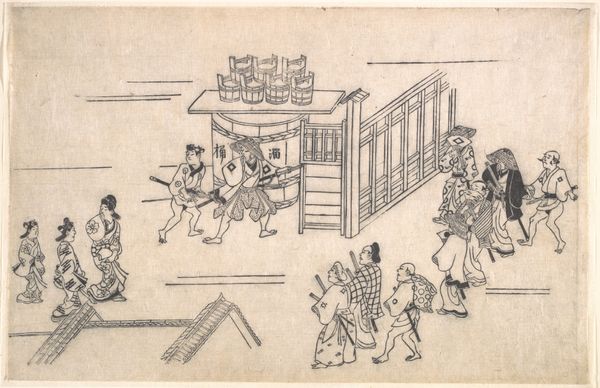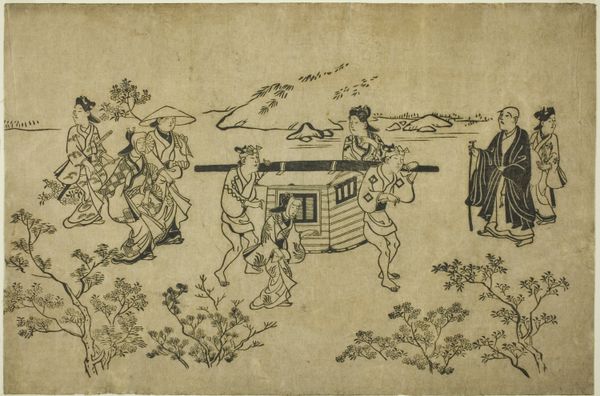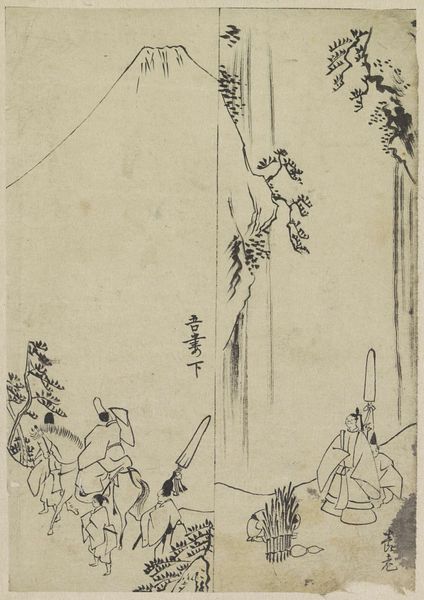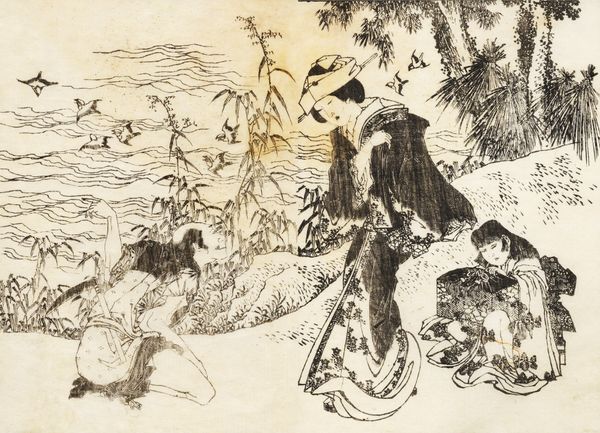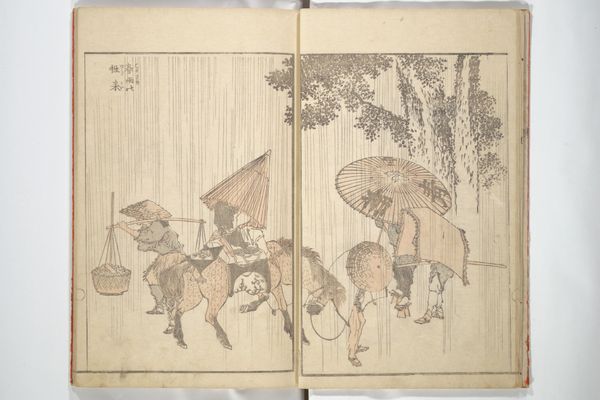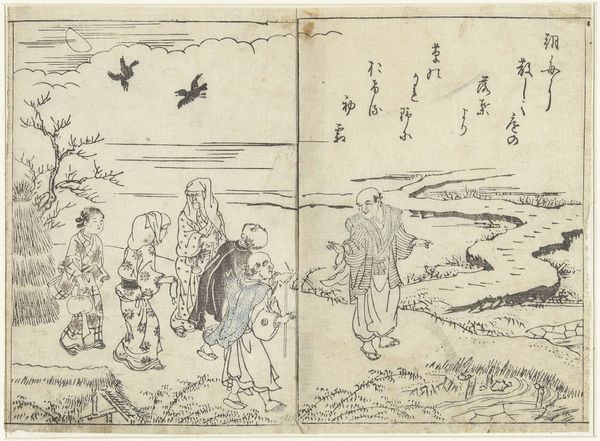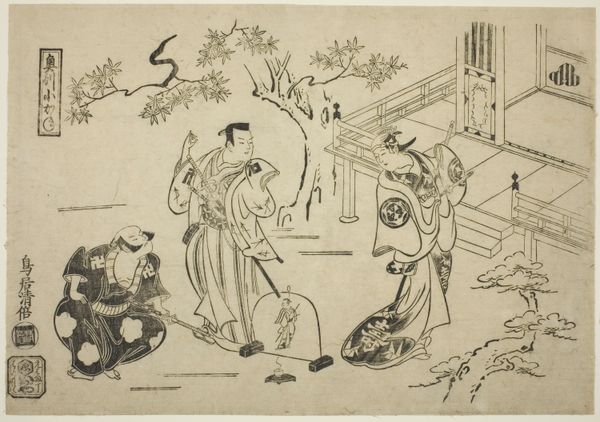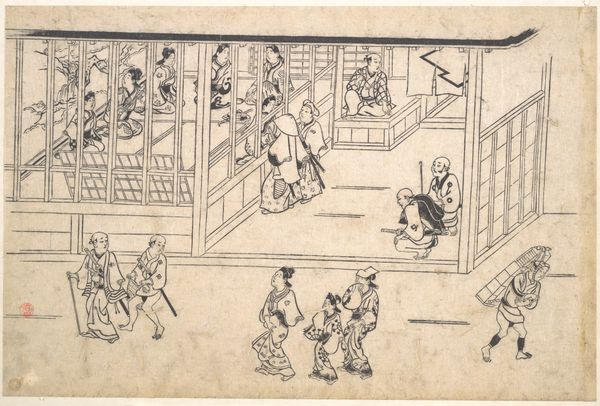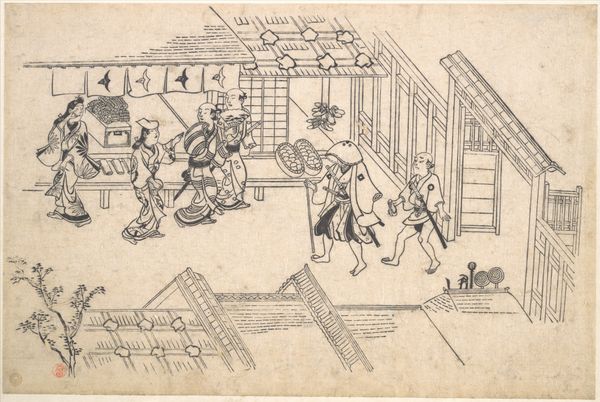
print, ink
#
ink drawing
#
narrative-art
# print
#
asian-art
#
landscape
#
ukiyo-e
#
figuration
#
ink
Dimensions: 10 1/8 x 15 1/5 in. (25.7 x 38.6 cm)
Copyright: Public Domain
Curator: Hishikawa Moronobu's "Two Young Samurai," dating from 1670 to 1690, offers us a glimpse into the Edo period through a simple ink drawing, currently residing at the Metropolitan Museum of Art. Editor: My initial reaction is one of quiet observation. The monochrome palette lends a sense of solemnity, but the positioning of the figures in relation to the gate and horse implies imminent movement or departure. Curator: Indeed. Considering Moronobu's role in popularizing ukiyo-e prints, it's important to examine this work through the lens of its production and consumption. Prints like these were integral to the rise of a consumer culture and the dissemination of samurai imagery amongst the merchant classes. Editor: Agreed. But from a purely formal perspective, the composition is brilliantly economical. The calligraphic lines create dynamic shapes and shadows despite the monochromatic palette. Observe the interplay of light and dark; how skillfully he renders volume and texture. Curator: And note the context of this economy! Paper was a precious resource. Moronobu would have had to think about cost, skill, and material constraints for the proliferation of these images within the broader societal structure. He was simultaneously artist and artisan, responding to market forces as well as aesthetics. Editor: The linearity drives the artwork here—look closely at how he defines forms. Consider the structural elegance: how line dictates the shape and mass of the figures. I want to isolate the form, to see what semiotic meaning can come of just that interplay. Curator: We also can't ignore how Moronobu tapped into, and perhaps shaped, a social fascination with the samurai class, packaging their image for popular consumption, further solidifying existing power structures via repeated prints. This, in turn, affects our understanding and reception of it. Editor: The way he depicts that horse... magnificent. The strong silhouette against the ground lends a powerful yet stoic energy. Ultimately, Moronobu masterfully wields visual language to explore the complexities of social life. Curator: The narrative subtly comments on the era’s social fabric via this intersection of commerce, art, and material practice, leaving us to wonder who these young samurai are and where they are going. Editor: A truly captivating artwork. It offers endless visual richness, proving art can be engaging and profound through its fundamental properties.
Comments
No comments
Be the first to comment and join the conversation on the ultimate creative platform.
